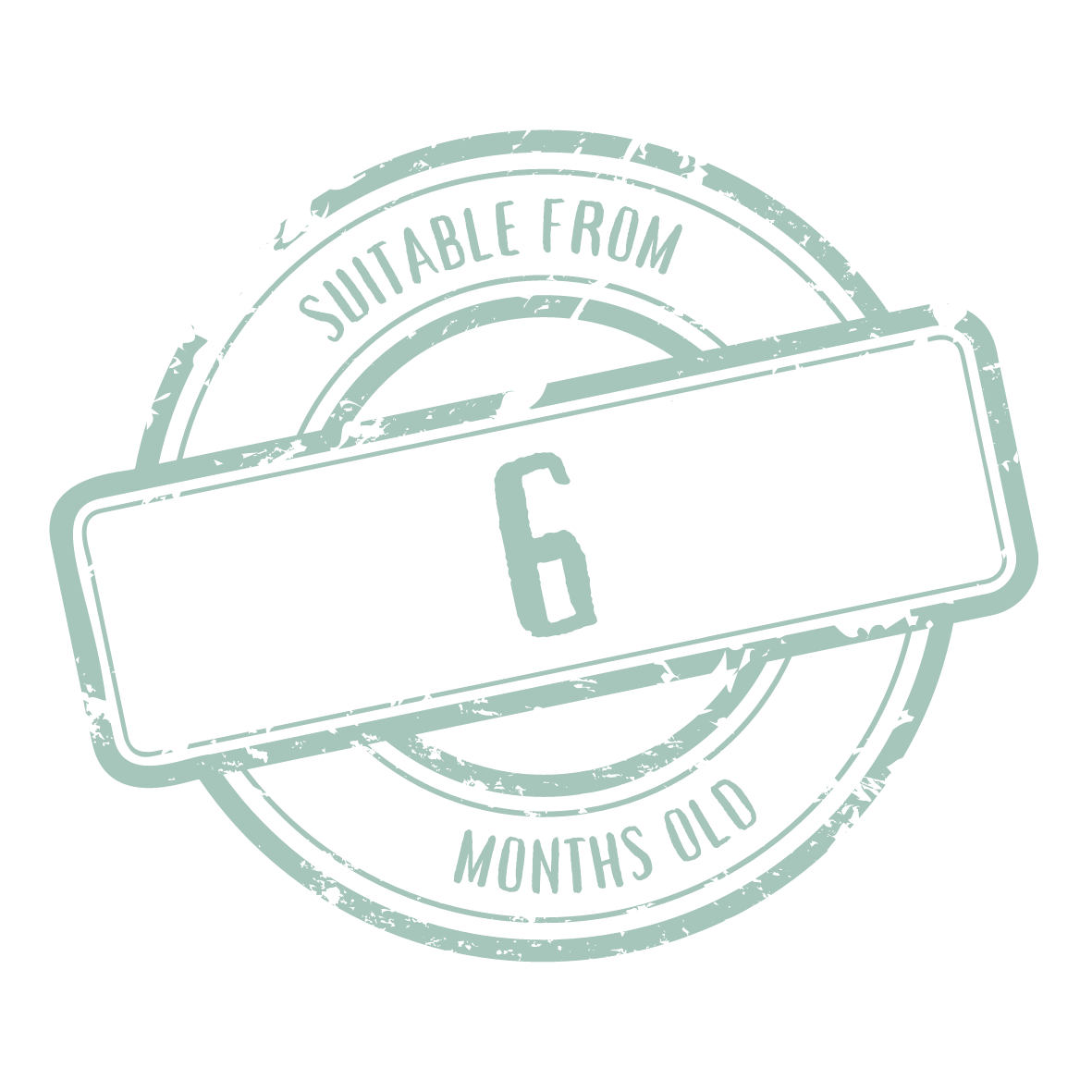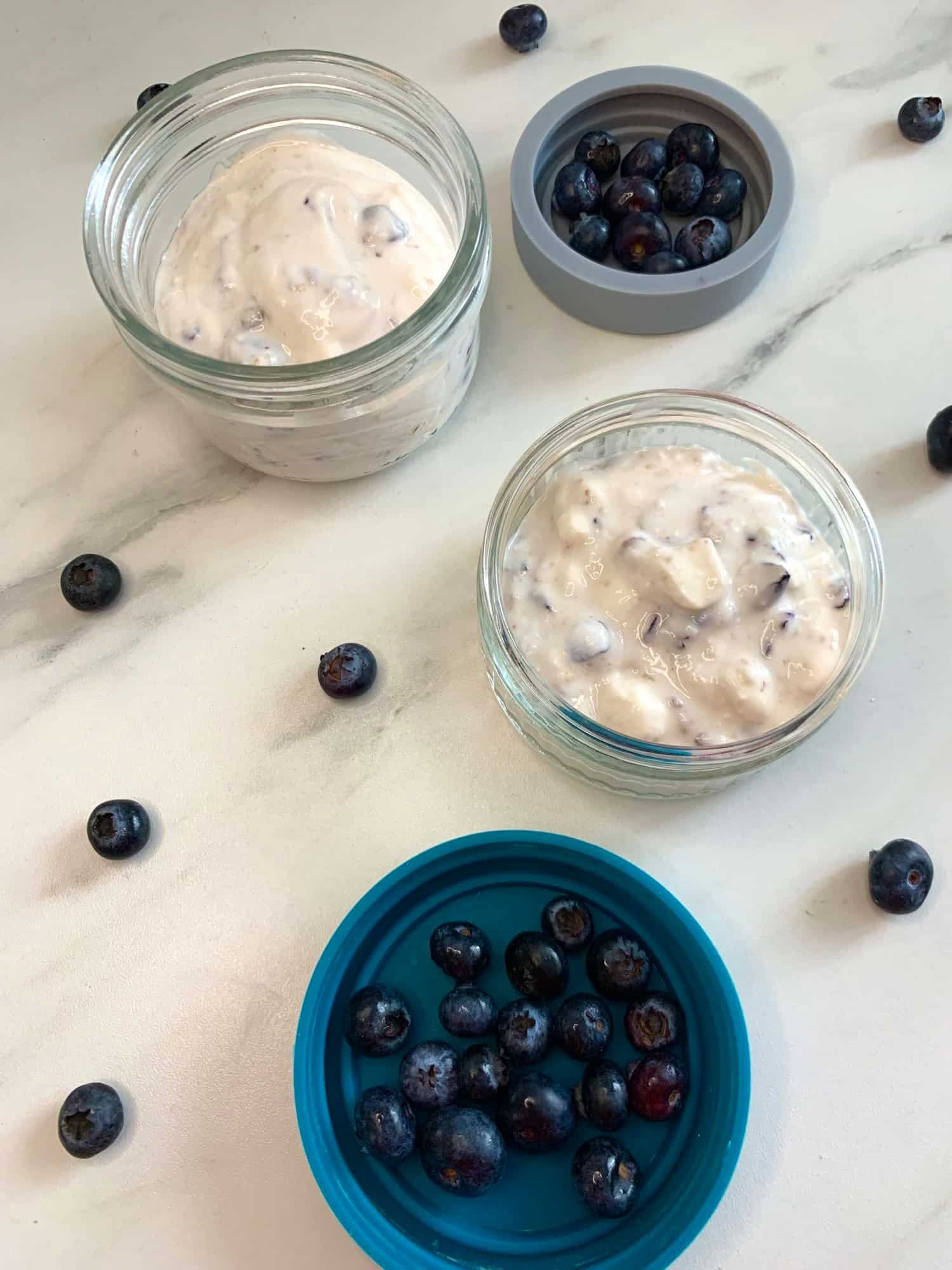Baby Led Weaning Cheese - Sweet Cheese Pudding Recipe
Table of Contents
Baby Led Weaning Cheese Dessert?
I know what you might be thinking, cottage cheese as a pudding! This does work really well as a dessert or it can be a delicious snack as well! The perfect introduction to cottage cheese. Baby led weaning cheese recipes just got interesting!
Can my Baby Eat Cottage Cheese Dairy Products?
Cottage cheese is really under rated in my opinion and such a nutritious food, I know the texture is disliked by some, but I find that kids really enjoy it! If not, it can be blended or whipped! You could blend all the ingredients in this recipe to make a smooth dessert if you wanted to!
Cottage cheese can be a great way to add to your baby's diet. Cheese products are packed with protein and calcium, which are essential nutrients and important nutrients for a growing baby and brain development.
It is recommend to offer cheese to babies around 6 months of age, as long as they have already been introduced to other dairy products like yogurt, cheese and whole milk.
It's important to start with small amounts and watch for any signs of allergic reactions, and be mindful of the salt content too.
Always consult with your health visitor before introducing new foods to your baby's diet to ensure it aligns with their specific developmental needs.
Introducing Cottage Cheese to Your Baby's Diet
Cottage cheese is a nutritious and versatile food that can be a valuable addition to your baby's diet.
Packed with essential nutrients such as calcium, protein, and phosphorus, cottage cheese provides the building blocks for healthy bones development and overall growth.
Its soft texture makes it easily digestible for babies, making it an ideal choice for introducing dairy into their diet.
Furthermore, the protein in cottage cheese supports muscle development and is crucial for the growth and repair of tissues in your baby's body.
Since cottage cheese is relatively bland, it can be a great base for introducing new flavours and textures to your baby as they transition to solid foods.
Additionally, cottage cheese is a good source of vitamins B12 and B2, which are essential for energy production and the maintenance of a healthy metabolism. The probiotics present in cottage cheese can also promote a healthy gut, aiding digestion and supporting your baby's immune system.
With its nutritional benefits and adaptability, cottage cheese can be a wholesome and satisfying addition to your baby's culinary journey.
Is Dairy a Common Allergen?
When it comes to Baby-Led Weaning (BLW), introducing allergenic foods is a topic of concern for many parents. Dairy is indeed considered a common allergen and is often introduced cautiously during BLW.
Cow's milk protein food allergy is one of the most prevalent food allergies in infants. Therefore, it's essential for parents to be vigilant when offering dairy products to their babies.
BLW emphasises introducing a wide variety of foods, including allergenic ones, to infants, but it's crucial to do so with care.
Parents should watch for any signs of an allergic reaction or intolerance when introducing much dairy to their baby during BLW. The best way to notice the signs may include rashes, hives, vomiting, diarrhea, or respiratory issues.
If any concerning symptoms appear, it’s crucial to seek medical advice promptly, to check for a dairy allergy.
In summary, while dairy is a common allergen, it is often included in the BLW diet.
However, parents should introduce it cautiously and be observant for any signs of an allergic reaction, seeking medical guidance if needed, for a dairy intolerance.
Is Cottage Cheese A Choking Hazard?
Cottage cheese can be a potential common choking hazard for babies during baby-led weaning. Its lumpy texture and tendency to stick together can make it difficult for infants to manage in their mouths, increasing the risk of choking.
While cottage cheese is a nutritious food that provides protein and calcium, it's important to introduce it to babies in a safe way. A good option can be by mashing it thoroughly or mixing it with other foods to reduce the risk of choking.
As with all solid foods during baby-led weaning, close supervision and ensuring that the texture is suitable for the baby's diet and developmental stage are crucial to minimise the risk of choking.
The Myths Around Cottage Cheese And Baby Led Weaning
Cottage cheese has long been a subject of myths and misconceptions when it comes to baby-led weaning (BLW).
Some parents worry that the texture of cottage cheese poses a choking hazard for babies, leading them to avoid introducing this protein-rich food during BLW. However, when cottage cheese is prepared in a baby-friendly manner, such as mashing or blending it to a safe consistency, it can actually be a nutritious and delicious option for babies practicing BLW.
Additionally, there is a common misconception that cottage cheese is high in sodium, but there are many low-sodium or no-salt-added options available.
By dispelling these myths and educating parents on safe ways to introduce cottage cheese to their little ones, it can become a valuable part of a varied and balanced BLW diet.
Benefits Of High Protein Cheese And Yogurt For BLW
When introducing solid foods to your baby as part of baby-led weaning, high protein cheese and yogurt can be excellent options to incorporate into their diet.
Cheese provides a good source of calcium and protein, essential for growing bones and muscles. Introducing a variety of cheeses can help expand your baby's palate while providing important nutrients.
Similarly, yogurt, especially Greek yogurt, is rich in protein and beneficial probiotics that support a healthy digestive system. Including these high protein dairy options in your baby's diet can help them develop a taste for nutritious foods early on, setting the stage for healthy eating habits later in life.
Just be mindful of potential allergens and the texture of the dairy products to ensure they are safe and manageable for your little one.
What Cheese Can I Have If I Am Pregnant?
When pregnant, it is generally safe for pregnant women to consume different kind of cheese such as hard cheeses such as mild cheddar in small cubes, swiss cheese (the best cheese), and full fat cheeses, as well as milder cheeses like mozzarella cheese and feta.
These cheeses are considered safe because they are made with pasteurised milk, which eliminates the risk of harmful bacteria such as listeria bacteria.
However, it is important to avoid soft and semi-soft raw cheese with a white rind, such as Brie and Camembert, as well as blue-veined cheeses like Roquefort and Gorgonzola, as they are more likely to contain listeria.
Vegan cheese is ok to have too, its best to avoid higher sodium cheeses and consume in small amounts.
It's best to consult with a healthcare professional for personalised advice on what foods to include in your diet during pregnancy.
This Dessert Can Be A Healthy Snack Too!
This is such a creamy pudding, I was unsure however if my son would eat it, but he loved it! He ate the whole thing!
Not only is this dessert creamy, because of the added cottage cheese, it makes for a dessert or snack that is full of protein, which means fuller for longer, which also means, no more snacks in the evening!
This is absolutely one to try! An inexpensive dessert that is healthy and packed full of goodness!
Ingredient information
Cottage cheese - Packed full of protein, and is so versatile! I have more recipes and ways to use cottage cheese such as a cottage cheese sheet pancake! Cottage cheese is a versatile dairy product packed with nutritional benefits.
It is an excellent source of protein, which is essential for muscle maintenance and repair. Additionally, cottage cheese is low in carbohydrates and contains healthy fats.
It is also rich in calcium and phosphorus.
Greek yogurt - A staple in our home, and used in so many recipes! Also protein packed and the best yogurt you can choose for your baby and kids! When it comes to Baby-Led Weaning (BLW), yogurt is a fantastic option to introduce to your little one.
Packed with essential nutrients such as calcium, protein, and probiotics, yogurt supports bone development, muscle growth, and a healthy gut. Its smooth and creamy texture makes it easy for babies to self-feed, promoting the development of their fine motor skills.
Additionally, the versatility of yogurt allows for endless pairing options with fruits, vegetables, and even a sprinkle of healthy grains. Introducing yogurt during BLW not only exposes babies to new flavours and textures but also sets the foundation for a lifelong enjoyment of nutritious foods.
Blueberries - A superfood that can be mashed, squished or blended for your baby from 6 months old! Blueberries are a fantastic addition to a baby-led weaning (BLW) diet, offering lots of health benefits for little ones.
Packed with essential vitamins, minerals, and antioxidants, blueberries can support a baby's growing immune system and overall health. Their soft texture makes them easy for babies to pick up and self-feed, promoting fine motor skills and independence at mealtime.
The natural sweetness of blueberries can also entice babies to explore new flavours and develop a preference for healthy, nutrient-rich foods.
Additionally, the fibre in blueberries can aid in digestion, promoting a healthy gut for the infant. Whether served as a standalone snack or incorporated into other meals, blueberries are a delightful and nutritious addition to a BLW journey.
Serving suggestion
The pudding can be served on its own, if you wanted to add a touch more sweetness to the pudding, you could blend some blueberries together with a splash of boiled water (from 6 months) to make a blueberry puree and swirl that through! delicious!
You could serve as part of a main meal alongside spaghetti bolognaise or cottage pie.
Storage instructions
You can store the puddings in small airlock containers or a large airlock container for up to 3 days in the fridge! If preferred you can store in glass jars for a ready on the go snack!
This recipe can be frozen too for up to 3 months, you can store in air lock jars or air lock containers or even an air lock freezer bag for up to 3 months!
To defrost, leave in the fridge overnight and make sure it has been fully defrosted before serving.
Once defrosted, you will not be able to refreeze.
Equipment used to help with this recipe
I have used these storage jars since my son was 6 months old! They are the best leak proof jars I have bought! I have 2 types of the same brand a set of 6 and a set of 2, which are slightly bigger. They are so good, and a really great investment! Great for on the go or simply just for storage! I have many more great kitchen and baby bits that I would highly recommend!
As an Amazon Associate, I earn commission from qualifying purchases.
Recipe | Baby Led Weaning Cheese - Sweet Cheese Pudding Recipe





Baby Led Weaning Cheese - Sweet Cheese Pudding Recipe
Ingredients
Instructions
- Mix all of the ingredients into a medium sized mixing bowl and serve into jars for fridge storage or suction bowls to serve.
Notes
Get experimenting with fruit flavours! Choose your baby’s favourite fruit to mash, this recipe will work with any fruit! Here are some of our favourites to mash instead of blueberries!
- Strawberries
- Blackberries
- Raspberries
- Stewed apple
©The Petit Spoon
Content and photographs are copyright protected and need prior permission to use elsewhere. Copying and/or pasting full recipes to other websites and any social media is strictly prohibited. Sharing and using the link of this recipe is both encouraged and appreciated! Share this post now!







